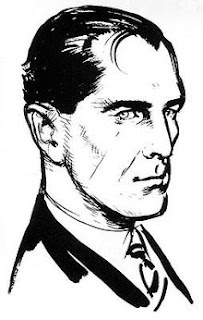Just the other day, my fourteen-year-old complained about not being allowed to watch rated R movies. He said, “You and Dad are I’m too overprotective and you're not giving me a chance to see what life’s really like.” Excuse me for being a parent. Instead of letting him watch today’s restricted movies, perhaps I’ll let him watch some of these:
The Cheat, 1931
A compulsive gambler will do anything to pay off her debt – including turning to a wealthy businessman behind her husband’s back.
Other Men’s Women, 1931
Events take an unhappy turn for two Bill and Jack, two locomotive engineers, after Bill is attracted to his best friend's wife.
 |
| Dorothy Mackhaill in Safe in Hell, 1931 |
Safe in Hell, 1931
After accidentally killing the man who raped her and forced her into prostitution, a New Orleans woman flees to a Caribbean island. While she awaits her fiancé, the vicious local police chief sets his sights on her.
Hot Saturday 1932
Scandal erupts after a young woman innocently spends the night with a notorious playboy and neglects to tell her fiancé.
Scandal erupts after a young woman innocently spends the night with a notorious playboy and neglects to tell her fiancé.
Merrily We Go to Hell, 1932
An abusive alcoholic reunites with a woman from his past driving his wife to drastic measures.
They Call it Sin, 1932
An abusive alcoholic reunites with a woman from his past driving his wife to drastic measures.
They Call it Sin, 1932
With time on his hands during a business trip, Jimmy Decker (who's engaged to his boss's daughter) romances small-town church organist Marion Cullen. She follows him to New York only to learn Jimmy's true colors after she's burned her bridges.
Ladies They Talk About, 1933
Attractive Nan, member of a bank-robbery gang, goes to prison thanks to evangelist Dave Slade...who loves her.
Born to be Bad, 1934
Letty, a young woman who ended up pregnant, unmarried and on the streets at fifteen is bitter and determined that her child will not grow up to be taken advantage of. Letty teaches her child to lie, steal, cheat and do anything else he'll need to be street smart.
Once upon a time in Hollywood, movies of the past were just as gritty as the movies of today. Well, maybe not just as gritty, but back in the late 1920s and early 1930s, it wasn’t unusual to find sexual innuendo, partial nudity, profanity, illegal drug use, promiscuity, prostitution, infidelity, abortion, extreme violence and homosexuality in films.
This period in cinema history is known as the Pre-Code era, the time before movies were censored and sugar coated to reflect all-American wholesomeness.
 |
| Ina Claire publicity still for The Greeks Had a Word for Them, 1932 |
According to DVD Beaver, “In 1934, Hollywood was turned upside down by the enforcement of a strict “Production Code” that would change the way movies were made for the next 34 years. During the “pre-code” period (1929 to mid-1934), censorship barely existed in Hollywood and filmmakers had free reign to make the movies they wanted and the public demanded. No subject was taboo...”
To read more about Pre-Code Hollywood click here.
The sensational subject of sex sold back then, just like it does today. However, Variety blamed women for the rise in such steamy films:
Women are responsible for the ever-increasing public taste in sensationalism and sexy stuff. Women who make up the bulk of the picture audiences are also the majority reader of the tabloids, scandal sheets, flashy magazines, and erotic books ... the mind of the average man seems wholesome in comparison.... Women love dirt, nothing shocks 'em.
The more times change the more they stay the same...
I haven’t seen enough Pre-Code movies to have a favorite, but I’d love to see Born to be Bad. Maybe I’ll watch it with my fourteen-year-old so he can learn what kind of women to avoid!
Were you familiar with the Pre-Code Era of Hollywood? Do you have any favorite Pre-Code films?
Reprinted from 1/20/14




















